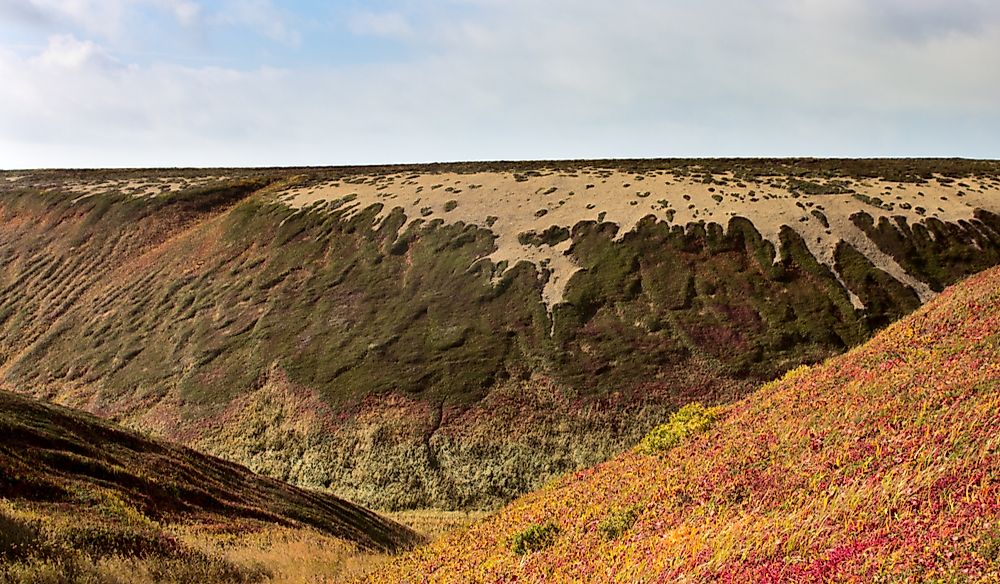What Is Solifluction?

Solifluction is a geomorphic process that involves the slow movement of water-saturated soil down a slope and usually occurs on frozen subsoil or during freeze-thaw activity. The term originates from the Latin words solum and fluction, which mean "soil" and "to flow," respectively.
Causes of Solifluction
Active solifluction can be initiated by repeated freeze-thaw cycles, the gravitational pull of Earth, debris flow and landslides, the formation of ice crystals, wet soils and regolith after heavy rainfall and snowmelt, volcanic eruptions, uncovered soil, and earthquake shocks. Additionally, deforestation contributes to solifluction by exposing soil to erosion, leaving it unprotected against the forces of water and making loose rocks and soil easier to move.
Solifluction occurs when the active layer melts during warmer temperatures, which causes ice to melt, smoothing the surface and reducing the friction between particles, and ultimately resulting in movement downslope. Solifluction also creates features called solifluction lobes, which are rounded, tongue-like slumps of soil that appear as terraces.
Types of Slope Movement
Rock Falls and Rock Slides
Rock falls occur when the rock on a steep slope breaks due to exposure to wind, gravity, and water, causing the rock to move rapidly down the slope. Rock slides occur when a slope is saturated with water or by earthquakes and can result in destructive hillside collapses.
Debris Flows
Debris flows occur when the material contained in a slope becomes saturated with water, developing into mudflow that follows river channels, and washes out bridges, trees, homes, and tributaries along its path. These flows usually occur after heavy rain, rapid melting of snow, or due to volcanic activity. Additionally, debris flows occur where vegetation is limited and in tropical areas with abundant rainfall and high temperatures, which accelerate the deep weathering of soil.
Creeps
A creep is the very slow movement of soil that occurs when surface sediment expands and contracts, leading to the gradual downward movement of the slope. The moistening, heating, and freezing of surface sediment cause it to expand upward while drying, thawing, or cooling of surface sediment cause it to contract.
Creeps occur more quickly when slopes are steep. Additionally, when creeps occur where trees exist, they can push against the base of the tree, causing a noticeable slant downslope.
Slumps
A slump occurs when the base of a slope is cut by natural phenomena, such as the effects of waves or streams, or by unnatural processes like the construction of roads or other infrastructure. Cutting off the base of the slope weakens the physical support for the upper portion of the slope, causing a fracture in the sediment, and eventually, the slope slides downward.
In order to address the issue of mass wasting, mitigation measures that need to be taken include the development of drainage systems, landslide potential maps, planting more vegetation, soil strengthening, rock anchor bolts, and avalanche support bridges.











